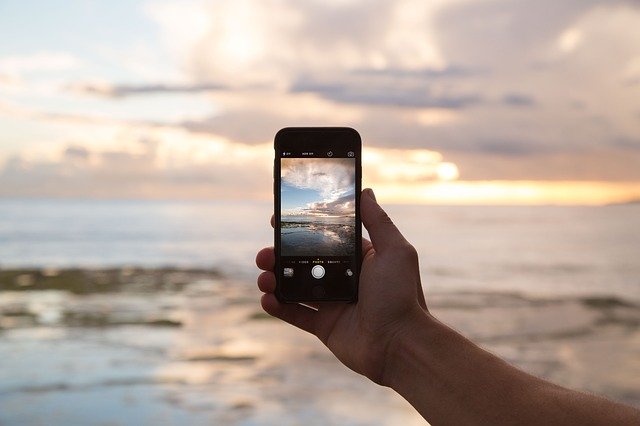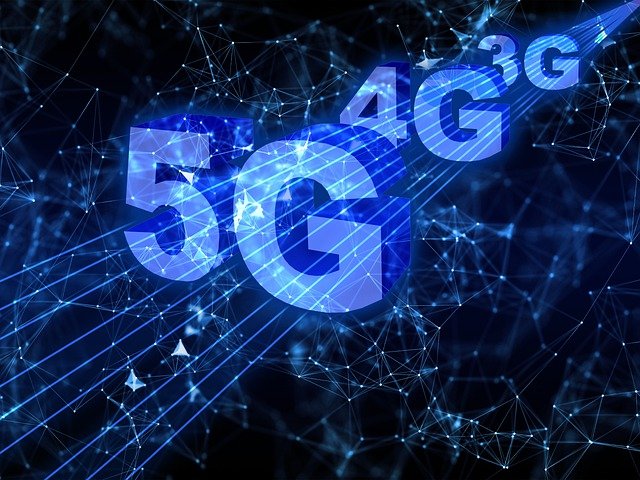
by Don Basile | May 28, 2021 | Tech
As of April 2021, there were an estimated 3.8 billion smartphone users in the world, or nearly half the global population of 7.8 billion. That has implications not only for communication and entertainment, but also safety.
That has been shown during the coronavirus pandemic, as nations like Germany and Ireland have used contact tracing apps to great effect. (That is not true in the U.S., however. Such apps have largely gone unused, in no small part because of privacy concerns.)
Still, smartphone apps have shown potential to keep users safe in other ways, one being in their ability to predict natural disasters. Such events as earthquakes, tsunamis, hurricanes, floods, wildfires, heatwaves, and droughts kill an average of 60,000 people a year. Scientists, as a result, have been extremely interested in developing mechanisms that not only prevent these disasters but also keep humankind at arm’s length from potential negative effects.
Smartphones come with integrated and highly precise sensor technology designed to assess environmental conditions like humidity, temperature, and even ground vibrations. For meteorologists to make sense of such data, they need a huge volume of this information.
Thanks to the Internet of Things (IoT) and blockchain, engineers can collect a treasure trove of data; scientists can consequently use this data to make accurate predictions on prospected weather patterns. This technology can prove crucial in helping predict the potential occurrence of heavy rains and flash floods within an area, for example.
The good thing with such data is that it is accurate and available at a moment’s notice. Smartphones come equipped with GPS technology which can help such meteorologists to determine the particular area affected accurately.
An additional convenience offered by smartphones is their ability to disseminate information as accurately, precisely, and timely as possible. In case, for instance, meteorologists accurately predict the occurrence of natural disasters within an area, they can immediately disseminate cautionary information to the residents, warning them of impending floods, heatwaves, fires, or even hurricanes. Such information is crucial in helping to reduce and manage the adverse effects of natural disasters.
The benefits that smartphones provide in the entire weather industry are further enhanced by the fact that these devices can remotely transmit data through satellites. Thanks to blockchain technology, the data can be instantly processed and even reliably used to make predictions through artificial intelligence and machine learning. The observed weather patterns can be compared to previous occurrences to predict impending disasters accurately.
For instance, if the data shows characteristic patterns in temperatures, atmospheric tides, and atmospheric pressure, then this information can be used to predict the occurrence of hurricanes. The consistent relaying of smartphone data thereafter can be used to determine the prospected path of such a developing hurricane, thereby offering advance cautionary information to the public.

by Don Basile | May 17, 2021 | Uncategorized
Blockchain will forever be tied to the cryptocurrency bitcoin, and understandably so. That, however, is rapidly changing. CB Insights pointed out in April 2020 that over the three previous years, worldwide spending on blockchain solutions had nearly tripled, and predicted that annual outlays would reach $16 billion by 2023. That same organization went on to list no fewer than 58 businesses the technology could impact — everything from banking (naturally) to ride sharing to entertainment.
This is far from a novel viewpoint. Back in 2019, Computerworld predicted that decentralized ledger technology (DLT) such as blockchain exhibited the same potential once shown by TCP/IP, the very foundation of the world wide web. And indeed, by the end of 2020 top organizations in virtually every sector had implemented DLT.
Here are four sectors in which blockchain could make a particularly significant difference:
- Elections: It is not an exaggeration to say that some of the furor surrounding the 2020 U.S. presidential election could have been avoided by using blockchain — that fraud claims would have been a non-starter if e-voting were in place. It is safe, secure and can be done from home. It allows for accurate tracking and counting, as votes cast on a blockchain leave an audit trail. And the thing is, it has already been tried on a smaller scale, as West Virginia used it in a 2016 primary. In addition, a blockchain platform developed by an organization called Follow My Vote was used in a presidential election in Sierra Leone in 2018, and deemed accurate.
- Healthcare: There are those who wonder if healthcare might not be the ultimate use case for blockchain, given issues like patient misidentification and providers’ inability to safely share data. Another thing to consider is the sheer volume of data that must be processed, particularly during a healthcare crisis like the coronavirus pandemic. Any of these matters can result in errors and unfavorable outcomes, but they can be avoided with blockchain technology. One prominent example is the manner in which electronic medical records can be accessed by multiple parties. In addition, a blockchain startup called Hu-manity has partnered with IBM on a ledger that according to a news release will enable patients to “claim property rights to their personal data,” allowing them to decide who sees it, and when.
- Real Estate: In 2017 the startup ShelterZoom became the first company to introduce a blockchain-based platform in the real estate space, one that according to a release at the time allows all parties “unprecedented speed, convenience, security and transparency” from beginning to end of a transaction. (And note that transparency is a particular pain point in this sector.) Other companies, like Propy and Ubitquity, have followed ShelterZoom’s lead, well aware that in addition to the aforementioned advantages, blockchain solutions greatly reduce the need for paper record-keeping.
- Supply Chain Management: Blockchain enables any party in the supply chain management sector to track a product throughout its journey, which Deloitte notes brings with it many advantages. A manufacturer can, for instance, ensure that its standards are met. Efficiency is improved. Monetary and material losses are decreased. There is less paperwork. Ultimately the consumer benefits from a better product, and one that is delivered in a more timely fashion. That in turn builds brand loyalty.
In short, the sky would appear to be the limit for blockchain, in any number of sectors. Far from being simply a cryptocurrency platform, it looms as a game-changing technology that allows for greater efficiency and security.

by Don Basile | May 10, 2021 | Tech
The announcement on Jan. 27, 2021 that two companies, 3D Systems and United Therapeutics Corporation, had successfully bioprinted lungs — organs that, significantly, had vascular structures capable of sustaining them — represented the latest breakthrough in a burgeoning field, and another step toward the day when transplantable 3D organs become a reality.
The companies’ development involved 3D printing vascularized hydrogel scaffolding that can be suffused with living cells, which in turn will create tissue. Dr. Jeffrey Graves, 3D Systems’ president/CEO called the development “absolutely remarkable” in a news release, and his company plans to ramp up development of bioprinting solutions.
Another recent development in this sector saw researchers at Carnegie Mellon University employ a 3D printer to create a model of the human heart. The material that was used in this process, according to a Jan. 7 report on Medical Expo E-Mag, was extracted from seaweed.
Adam Feinberg, a professor of biomedical engineering and materials science at Carnegie Mellon, told Medical Expo that bioprinting a transplantable heart is “decades off,” but added that parts of that organ, like valves and sections of the ventricle, should be available “much sooner and have a major impact in that way in a matter of years.”
Advances like these have become commonplace throughout the medical field in the wake of the coronavirus pandemic, which has presented new challenges and demanded innovative answers. But beyond that is the grim reality that there was a crying need for organ transplants, even before the outbreak. Over 108,000 U.S. patients were on waiting lists as of the end of January, according to the United Network for Organ Sharing, and 20 people die every day for lack of a transplant.
But the aforementioned breakthroughs offer hope, as did such 2019 developments as the 3D printing of a rabbit-sized heart in Israel and a pancreas in Poland. There is every expectation that the momentum will be maintained, as indicated by predictions that the 3D bioprinting market size — which encompasses not just organ printing, but that of ventilators, COVID-19 test kits, etc. — will exceed $9.9 billion in 2026, up from $8.3 billion in 2020. That’s a compound annual growth rate (CAGR) of nearly 19 percent.
Two of the bigger challenges of creating transplantable 3D organs are differentiation (i.e., ensuring that a patient’s body accepts such organs) and, as mentioned earlier, vascularization. Researchers believe that the first issue can be solved by using the patient’s own stem cells to build a new organ, though Robby Bowles, a bioengineer at the University of Utah, told The Scientist that it’s not that simple — that it’s a matter of “coming together and producing complex patternings of cells and biomaterials together to produce different functions of the different tissues and organs.”
Research is ongoing in that realm, and developments like the one by 3D Systems/United Therapeutics make clear that vascularization is possible. As Courtney Gegg, a senior director of tissue engineering at Prellis Biologics, told The Scientist, a blood supply is vital to organs’ survival.
“It can’t just be this huge chunk of tissue,” she said.
That hurdle, at least, has been crossed, the latest sign of progress in a promising field. These latest developments show that the 3D bioprinting of transplantable organs will one day become a reality.

by Don Basile | Dec 10, 2020 | Tech
3D printing is not just a matter of bigger and better, but also smaller and smaller. While such printers have already reached the point where they can produce items as large as houses and as complex as gastrointestinal system models, they can now recreate or reproduce objects that cannot be seen with the naked eye.
3D nanoprinting, as it’s called, involves using a focused electron beam to produce nanostructures — i.e., structures of molecular dimensions. This technique is invaluable in every field from medicine to electronics, and even in such areas as food science.
So how did we get here?
Until the advent of 3D printing, the only way to make objects ranging from ceramic mugs to carburetors was to create a mold of an object then fill the mold with the substance the object was to be made from. Creating the molds is prohibitively expensive, so the more you produce of a single object, the more the price of that object goes down.
One problem with this, however, is that any imperfections in the mold will result in an imperfection in the thousands, if not millions of items that mold produces. Any changes you want to make in the item also require the creation of a brand new mold.
3D printing, on the other hand, prints an object in hundreds and hundreds of thin layers that are created with thin strands of heated plastic. Heating the plastic liquifies it just enough that each layer will bond with the preceding layer.
More expensive and elaborate 3D printers are available that can print with almost any type of materials that can be heated and softened, such as metal but for the most part, 3D printing works by shooting very precise, thin strands of polymers or plastics in streams that bond together to create a single object. This offers the opportunity for changes to be made with each new printing and even to create a single, unique object without a mold.
There are, however, several challenges to printing on a microscopic level. Coming up with a device capable of shooting a microscopic strand of polymer is one but then shaping that polymer into a usable object is another. Recent advances have developed a system using negative polarity to attract one strand of polymer to another.
The implications of nanotechnology are almost limitless and every one of those applications will eventually need to be mass-produced. Imagine tiny armies of nanobots that can be absorbed directly through the skin that can be programmed to seek out and destroy cancer cells, leaving healthy cells intact or microstructures that can replace damaged tissue in a liver or kidney.
While medical applications may be among the most exciting applications for nanotechnology, its everyday uses are of interest as well. The smaller the tech that powers your electronic devices, for example, the smaller the devices themselves can be. Imagine an entire smartphone being reduced to the size of a disposable microdot you can simply stick onto your inner ear.
In addition, nanotechnology is being used to create smart coatings for windows that can lighten or darken to allow in a precise amount of light or even shade a certain area of a large window where the light is the strongest. All of these applications, however, will require millions of individual nanostructures to be created, which will create a greater and greater demand for 3D nanoprinting.
So onward we go, to a frontier that is becoming ever smaller, ever more complex — and yet, ever more promising. 3D nanoprinting enables us to go places we might not have ever visited before, and to improve structures and processes in ways that could have only been imagined in the past. It has been said that the future stretches out in front of us, as far as the eye can see. Actually, it goes well beyond that, to places that can’t even be viewed with the naked eye.

by Don Basile | Oct 20, 2020 | Tech
While 4G technology made possible high-speed mobile browsing and wearable connectivity, 5G promises that those wearables will become even more prominent, smaller, and more efficient. That goes for ones already in existence, like smartwatches and health trackers, and those still on the drawing board (like, believe it or not, tattooables).
How that happens comes down to 5G’s accessibility to the cloud, its lower latency, and its speed, which can theoretically be 100 times faster than 4G.
Real-time data transfer will now be possible, and some experts believe that in the not-too-distant future, virtually everything we wear (clothing, shoes, contact lenses, even sensors placed under the skin to track health data) will transform us into walking, talking connected devices.
Certainly skeptics remain, but Fortune cites International Data Corporation projections indicating that wearable sales will reach $49.4 billion this year, and soar to $69.8 billion by 2024. Sanyogita Shamsunder, Verizon’s vice president of 5G Labs and Innovation, told Fortune that ‘2024 will in fact serve as an “inflection point,” as that will be the year that medical sensors will become commonplace.
Already available, Fortune notes, are smart glasses, smart earbuds (a.k.a. “hearables”) and yoga pants that make those wearing them aware if their yoga technique leaves something to be desired.
And those tattooables? While still in development, they are expected to be constructed of wafer-thin electric mesh, according to Fortune, which will enable them to store data and do things like deliver drugs.
The reason wearables are expected to shrink in size, according to TechRadar, is that they will no longer need physical space to store data; 5G can simply zip data right to the cloud. Instead, wearables of the near future will consist of ultrathin sensors, and little else.
An increase in sensors and a decrease in size is precisely what will cement wearables as part of the Internet of Things. Until now, we’ve mostly thought of wearables as items such as smartwatches that the user wears on their wrist. But these sensor-packed devices could just as easily be connected to objects rather than people to read and process data in real-time.
Consumers may also be happy to know that relieving some of the processor’s job means that a device’s battery will be more efficient. The ability to charge wirelessly within a wider range — up to 30 cm away — will allow devices to charge without cables or docks, even when in use.
All of this will take time, however. AT&T, Verizon and T-Mobile have all begun rolling out 5G, but it will be years before most of the country, let alone the world, has coverage. Then, manufacturers must create devices that harness the power of 5G.
In addition, there are privacy concerns about sensitive personal data being widely circulated, location data being easily accessible, and even foreign manufacturing threatening national security.
Such matters give one pause, to be sure. But for now, it’s full speed ahead for 5G, at 100 times the pace of the existing technology. While there are potential hurdles, there are also vast possibilities that make 5G’s future look extremely promising.




